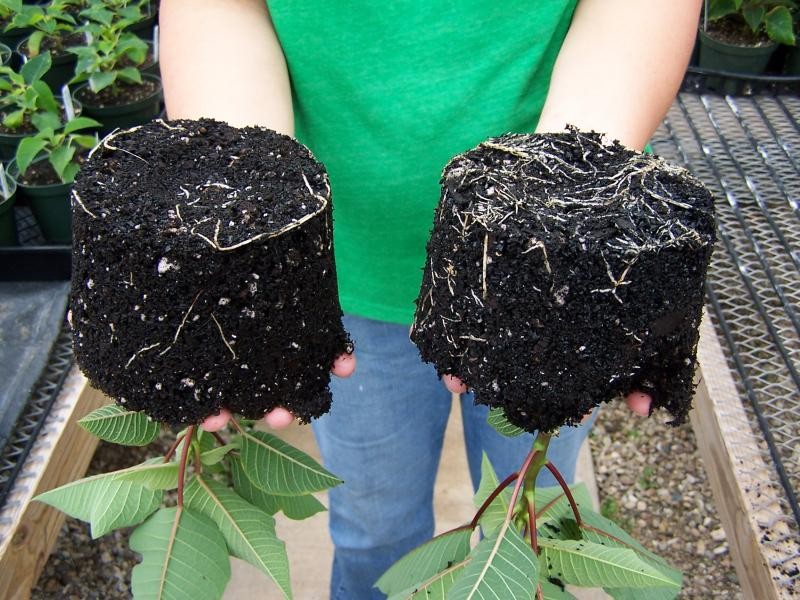
Improve Rooting of Cuttings
The biggest rooting season for ornamental cuttings occurs during some of the darkest and coldest days of the year — in January and February. When conditions are close to ideal, cuttings of most herbaceous species should be well rooted within three or four weeks after they are stuck. If they are not, then usually something about the rooting environment or plant culture is limiting rapid root development. The following are eight keys to successful production of liners.
1. Rapidly inspect, store, then stick cuttings upon arrival. Most cuttings are shipped by air freight and typically two days have elapsed since cuttings were harvested. Once cuttings arrive, immediately inspect them, then store open boxes in a dark, humid and cool environment (45° F for most species, 55° F for tropical and cold-sensitive crops). They should be stuck as soon as possible and within 24 hours of arrival.
2. Apply a rooting hormone to most crops. Rooting of most, but not all, ornamentals is more uniform and rapid if the base of cuttings is dipped into a rooting hormone containing an auxin (IBA and/or NAA, often 1,000 to 2,500 ppm) immediately before they are stuck in a substrate.
Alternatively, an overhead spray of some rooting compounds can be equally effective and reduce labor costs.
3. Use a light, porous rooting media. Rooting can be slowed if the rooting substrate is too heavy and retains too much water. A desirable substrate is generally more porous than media used in finished containers. This is especially important for species with pubescent or fleshy stems. One way to accomplish this is to use a media with 30 to 50 percent perlite and/or vermiculite.
4. Provide supplemental lighting when the DLI is low. Light during propagation should be diffuse, especially during the early stages of rooting, and should increase as roots develop. The maximum desired intensity depends on the stage of rooting and should be limited to around 200 μmol∙m-2∙s-1
until root initials have formed. In the northern U.S., the daily light integral (DLI) is often a limiting factor in January and February. Supplemental photosynthetic light (50 to 75 μmol∙m-2∙s-1) on cloudy days and during the night can provide the energy needed for rapid rooting, especially once root initials have formed.
5. Develop a misting/fogging program based on the environment. During the early stages of rooting, the air should be calm and the humidity should be high (90 to 95 percent relative humidity or 0.3 kPa vapor pressure deficit, VPD). A successful strategy is
to provide misting based in part on the light levels, where misting frequency increases with light levels, and vice versa. Each misting cycle should deliver fine particles of water to nearly cover the leaf surface without runoff. Reduce misting frequency as roots form. Developing the proper misting settings is a challenge but a “good” one will accelerate rooting.
6. Maintain a media temperature of 72 to 75° F. This usually requires the delivery of heat to liner trays using floor or under-bench heating. Without the delivery of heat specifically to the root zone, the media can be surprisingly cool, which slows rooting. Ideally, provide an air temperature about 5° F lower than the media temperature so root growth is more rapid than shoot growth.
7. Provide fertilizer once roots develop. Some growers use water without fertilizer for misting while others incorporate a low concentration (50-ppm nitrogen) of feed in the mist, sometimes without phosphorus. Periodically check fertility levels in the substrate during propagation because misting with unfertilized water rapidly leaches the fertilizer in the media. An occasional watering with fertilizer at 150-ppm nitrogen — including minors — can provide the nutrients that cuttings need for rapid rooting.
8. Maintain sanitary conditions. To prevent the potential spread of viruses and pathogens, sanitation is extremely important when handling cuttings and in the rooting environment. Any bare soil should be covered to prevent algae buildup. Buildup of algae on the media surface can indicate misting is being applied too frequently. Routinely sanitize hands, equipment and benches/floors. Often times, one can predict the success of a rooting facility based on its cleanliness.
Erik Runkle is professor and floriculture extension specialist in the department of horticulture at Michigan State University. He can be reached at runkleer@msu.edu.


 Video Library
Video Library 




















